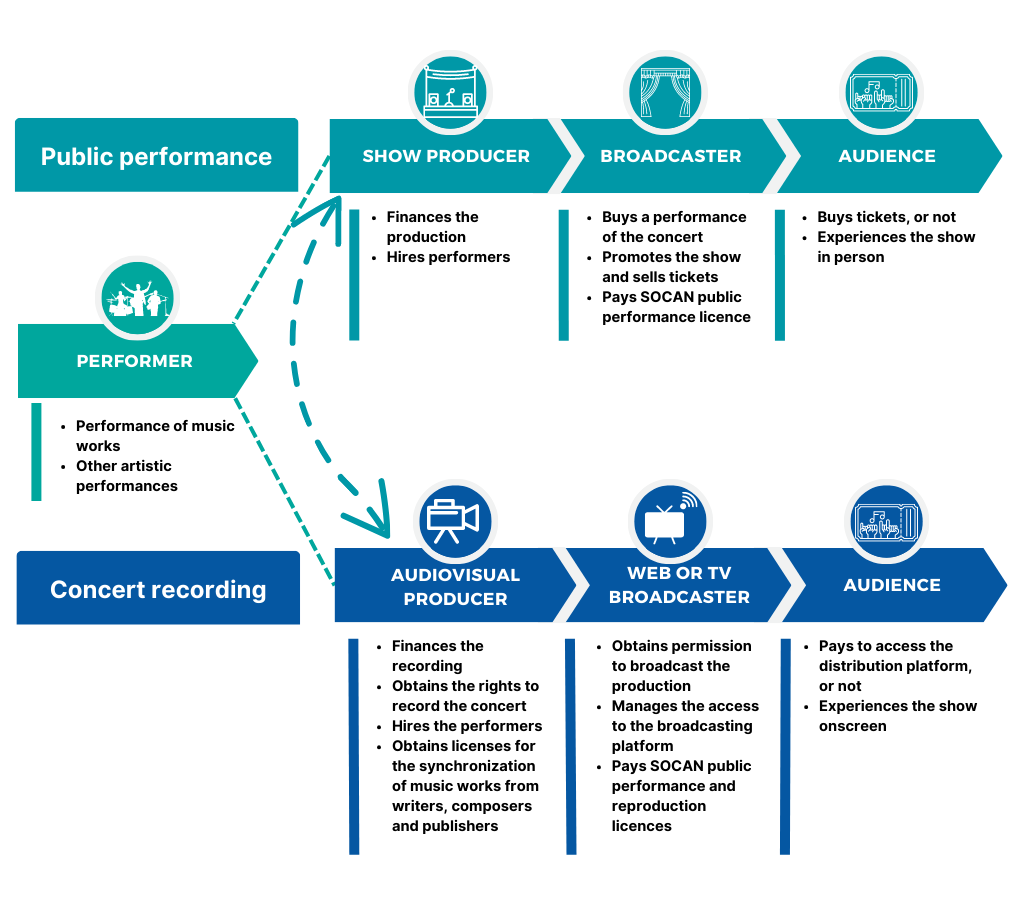The video recording of a live show comes with a few unavoidable obligations when it comes to obtaining permission from music right holders. The same applies to the release of the rights to the songs or compositions being recorded. Recently, APEM (Association des professionnels de l’édition musicale) published condensed instructions to help you find your way. With APEM’s permission, a text and a graphic explaining how to record and broadcast a live show are reproduced below.
When a show is being recorded, the person who’s financing the recording wears the hat of audiovisual producer, and he or she must obtain the permission of the work’s rights owners, and the release of the rights involved.
Identifying rights holders
The producer must contact the music publishers, or the songwriters themselves if they don’t have a publisher. It’s important to remember that performers aren’t necessarily the creators of the works they perform, and that, even if they actually are, they may have co-writers. To identify right holders, please view the public repertoire of SOCAN or CMRRA.
Music rights

A variety of music rights are involved when a show is being recorded. There are public performing and reproduction rights, but also first fixation rights, commonly known as synchronization rights.
For synchronization (or “sync”) rights, the producer must secure a formal license for the use of the music work. Licenses are only valid for the contexts, territories, and extents, and durations that are explicitly agreed with rights holders.
Rates vary according to a variety of factors, including the context, the territory, the extent and duration of the use, as well as the notoriety of the song or composition, of the songwriter and of the work’s performer, etc. If at first you’re not sure of all the uses that will be made of your audiovisual content, just negotiate a base rate for the anticipated uses, and separate rates for the various possible use options.
Download instructions (in French only) to help you make a better synchronization request for a use in an audiovisual context.
Complete instructions on the process.